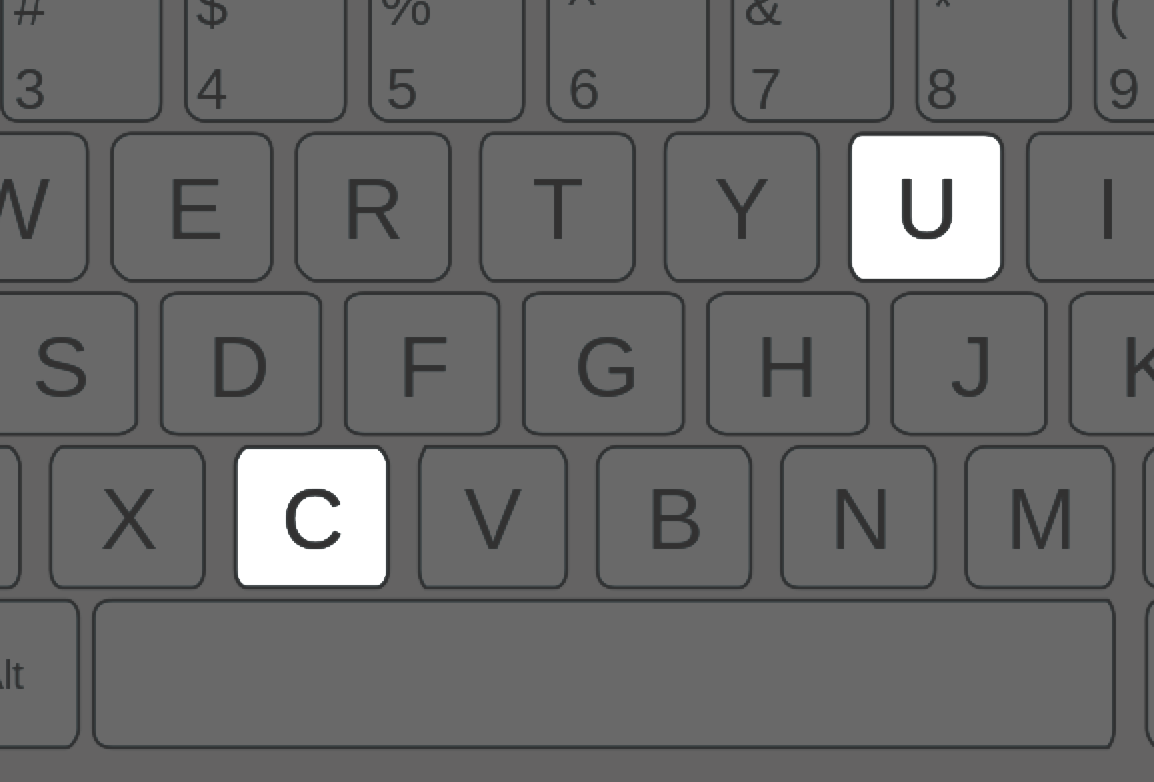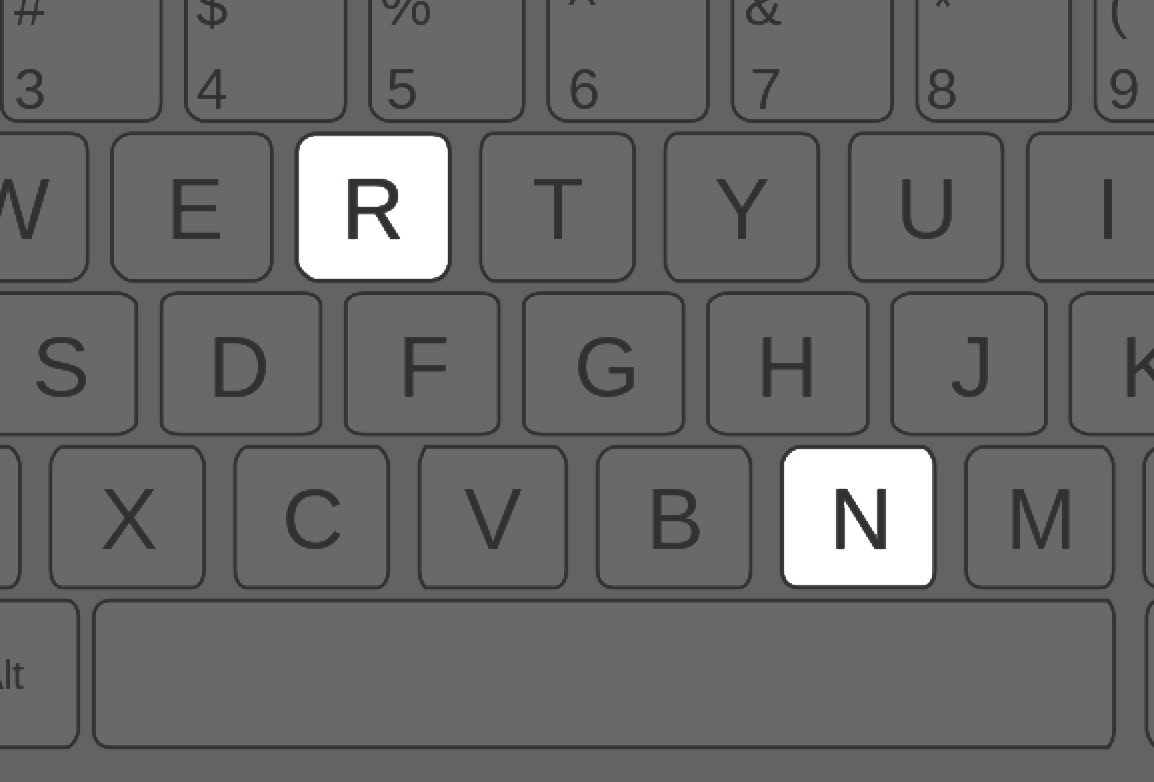Close your eyes for a moment and think about the past year. Now imagine mapping out your plans for the upcoming year. If you had to point to a location that corresponds to “tomorrow” or “next month,” where would it be? What about “yesterday”?
Chances are, next month is somewhere to the right of tomorrow. Last week is somewhere on the left. Last February is somewhere way over on the left. If you tend to think of the past as being on the left, and the future being on the right, you’re not alone. Our brains have a strong tendency to associate time with spatial locations. My TV’s remote control, for example, has the “<<” arrow on the left to go back and the “>>” arrow on the right to go forward. I keep my to-do list in a spreadsheet where each week is a column, and each week goes – you guessed it – from left to right.
This representation of time in terms of a mental timeline is a well-known phenomenon in cognitive psychology and we’re generally faster to make responses when the mapping of spatial locations matches this left-to-right flow of time. This phenomenon is called the “Spatial-Temporal Association of Response Codes” effect or STEARC effect for short. Of course, it’s easy for us to think of time as falling line from left to right. But what about the vertical dimension? Is the future up or down? Do we use both dimensions (left/right, and up/down) at the same time? If so, how do we combine them?
These are the questions that Alessia Beracci and Marco Fabbri (pictured below) investigated in a recent paper in the Psychonomic Society journal Attention, Perception, & Psychophysics.

If we consider the vertical ‘dimension’ of time, in Western cultures, it’s common to map time in terms of spatial locations going from bottom to top (with top being more recent). For examples of this, look no further than your email, your Instagram, or other social media feed, where the most recent content is at the top. This makes some intuitive sense as well, as it follows patterns that we see in nature (a child growing into an adult, or a tree growing upwards).
In the study, the authors proposed that we can map our representations of time in two dimensions. For example, we might expect the progression of time to go along a positive diagonal (i.e., from the lower-left to the upper-right, with the upper-right being more recent).
To test this idea, the authors tested a group of Italian students in a temporal judgment task. Participants saw a word or phrase in the middle of the screen and had to respond using one of two keys to indicate whether the word was used to describe the past or the future. The key (literally) was in the mapping of the responses. In one pair of conditions, the response keys fell along the positive diagonal. As shown below, participants used the “C” key on the bottom-left of their keyboard to indicate words describing the past (e.g., ‘yesterday’, ‘recently’), and the “U” key on the upper-right to indicate words describing the future (e.g., ‘soon’, ’tomorrow’), or vice-versa.

Participants were faster and more accurate when the “C” key was used to represent the past and the “U” key to represent the future, than the other way around. Think of it like the buttons on your remote control. If somebody swapped them so that you had to press the button on the left to go forward, and the button on the right go back, you’d be a bit slower, and you’d also make more mistakes (and hopefully not throw your remote control across the room in frustration!).
This suggests that we might be able to map time along a positive diagonal, but is this just due to the strong left-to-right progression that we see everywhere? To test this, the authors had another pair of conditions, in which the negative diagonal was tested as well (shown below), going from the upper-left (the “R” key) to the lower-right (the “N” key). Faster responses when “R” corresponds to the past and “N” represents the future would suggest that the left-to-right mapping dominates over the vertical bottom-to-top mapping. And this is exactly what the authors’ results showed. However, when the authors tested this again with the words placed in different locations on the screen, these associations for the negative diagonal were much weaker.

What does this all mean? It suggests that the horizontal left-to-right mapping seems to dominate when we map time in two dimensions. Our brains might be a bit more flexible when it comes to the vertical dimension, such that we can represent time going from either bottom-to-top, or top-to-bottom. If we think about it, there are many examples in everyday life where more recent events are further down. Your text message conversations likely have the most recent messages at the bottom. That printed program from your cousin’s wedding probably had the events of the ceremony listed from top to bottom too.

In some sense, mapping along the vertical axis could be more flexible; sometimes it makes sense for more recent information to point ‘up’, and sometimes for more recent things to go ‘down’, and our brains flexibly switch between these two modes of processing information. The inconsistencies in our mapping of time along the vertical dimension could also explain why people get so confused when someone asks to move a meeting “up” (do they mean earlier or later?). So instead of dealing with the vertical dimension, maybe it’s always better to just state the time!

Featured Psychonomic Society article
Beracci, A., & Fabbri, M. (2023). The combination of the horizontal and vertical dimensions in mental time representation: the existence of a spatial mental map of time. Attention, Perception, & Psychophysics, 85(7), 2386-2405. https://doi.org/10.3758/s13414-023-02792-4
